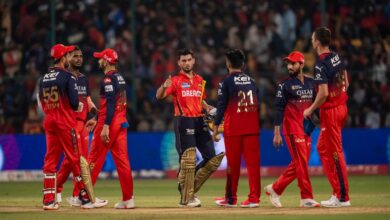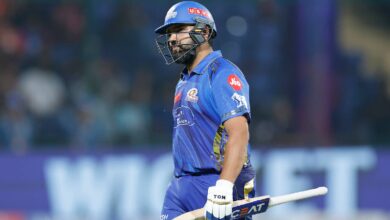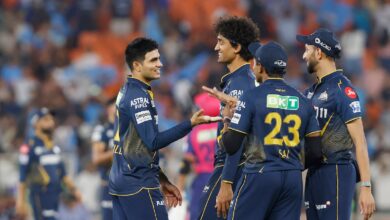Ghost of a Match Day Friday at Sharjah

The Match Day Friday was slumberous in Sharjah. The shops and offices that hug the stadium are shut, a few moustachioed guards are reluctantly tottering with their automatic weapons outside the stadium, a modest structure compared to the stadiums in Dubai or Abu Dhabi, there are no serpentine queues that test the durability of the barricades or a mad rush. Spectators are quietly filing into the stadium, more like students under the supervision of a class teacher during an excursion. The road beside the stadium and the flyover beyond it are largely bare.
This was not the Match Day Friday in Sharjah we imagined it to be or watched a hundred times over in the past. This was a ghost; bereft of the old buzz, the friction, the brle and the halo that made Match Day Friday both feared and loved in equal measure in the subcontinent. Then, this was a game between Pakan and Hong Kong, not between Pakan and India.
But for the old-timers every match transports them into the past. One of them is Hazrat Usman, who is a Sharjah resident and has revelled in many India-Pakan duels on Friday. “Woh ek alag zamana tha. (A different era) I have not missed too many games at the stadium, but nothing like those And I think the only reason I have come here is to relive those old memories,” says Usman, who first watched a game at Sharjah with his father, and now has come with his three-year-old grandson. “Hopefully, when he grows up, he will get to see India-Pakan games here,” he says. He even rattles out the date: March 26, 2006. “Waqar ne paanch wicket liye. Inzi ne sau mara tha! Usne ek cover drive mara tha, abhi bhi yaad hain,” he says. (Waqar’s five-for, Izzy’s hundred; his cover drive is still in memory).
Though most teams and legends have played in the most-played ground in the world, Sharjah was all about India and Pakan. On the hallways and cabins hang the pixellated photographs of the legendary players from both sides and the moments that made them. From the last ball Javed Miandad six to Sachin Tendulkar’s maiden hundred against Pakan or that Aaqib Javed hat-trick.
But you don’t need photographs to remember the moments. From memory they would tell you where a Tendulkar six landed or how Wasim Akram bowled Sourav Ganguly. They don’t need the banners blaring: “Welcome to the home of cricket in Emirates” or “It all began here” to understand the tradition of this ground. Modernity sits at odds with the stadium.
The stadium too lingered in the memories of the past like the city itself. The story goes that while Dubai was still not much more than a slightly trading port, Sharjah was at the forefront of tourism development. But the ruler Sheikh al-Qasimi had a change of heart and decided that western influences were not what he wanted for his people and preserved what is left of the area’s past.
For a long time the stadium, too, resed changes. “Some time ago, there used to be so few games here that the locals used to let their goats graze here, tie them to the fences, the bases of the floodlight pylons were used as washing lines,” says Abrar Shah, who lives just across the flyover. But transformation was inevitable. The flyover had eaten most of the land, a tier had to be demolished, the seating arrangements are modern, no longer the old stone steps, pagoda-roofs cover all but one stand, there are CCTVs spying you from every corner, the Vip boxes are opulent. Sharjah had to change, just as the world around it has.
There, though, are remnants. Like the low-built stands and pen-like fences and the lean floodlights. The sights and sounds, though, are much the same as you had seen long time ago. The chants of “Jeetega bhai jeetega, Pakan jeetega” rang around the stadium like an anthem. The shriek of the whles and the droll of the drums reverberated the arena. The stands are so close to the ground, the audience is always involved and charged up. What it lacks for capacity—it could accommodate just 17,000—it compensates with the atmosphere.
Perhaps, the biggest reminder of the past is the end named after Sharjah cricket’s brain—the Emirati businessman Abdul Rahman Bukhatir, who envisaged turning Sharjah, then an outpost in Arabia, into another Mecca for world cricket, after falling for the game when at school in Pakan. His dream became a reality when his construction business grew along with the oil boom in the 1970s, when the only cricket played in UAE was the officers of the British Army on the concrete strips of the primitive airport runway.
Sharjah hosted the first match—between Javed Miandad’s Pakan and Sunil Gavaskar’s India—on April 3, 1981, under the umbrella of the Cricketers Benefit Fund Series. Then it became an annual fixture and a share of the proceedings went to retired cricketers. Developments then winked in rapidly, like most ventures in this neck of the woods, after that inaugural game. In April 1984, the first triangular series, the Asia Cup, was played between India, Pakan and Sri Lanka. For the best part of the next two decades, Sharjah was the cradle of one-day cricket.
Bukhatir’s dream turned out to be a vision that, for all the stadium’s lost glory, still shines in significance. Even if it becomes dysfunctional one day, its legacy and lure cannot be rubbed off the game’s hory. In more good and less bad ways, it was a precursor of how the game would evolve in the years to come, laying the framework of how cricket could be in the future.
Of how entrepreneurial businessmen could transform the finances and nature of the game, of how broadcast rights money would make boards and the game richer, of how cricket could be played in neutral venues with as much fanfare as the ones at home in a security-challenged world, of how it could be a glamorous mix of politicians, businessmen, Bollywood actors, betting and match-fixing, of the twin demons of gambling and fixing that was to shake the foundations of the game. Sharjah embodied cricket with all its virtues and vices. In a way, it would be first and the longest chapter in the story of modern cricket. Even if Match Day Fridays are not what they once it used to be.







